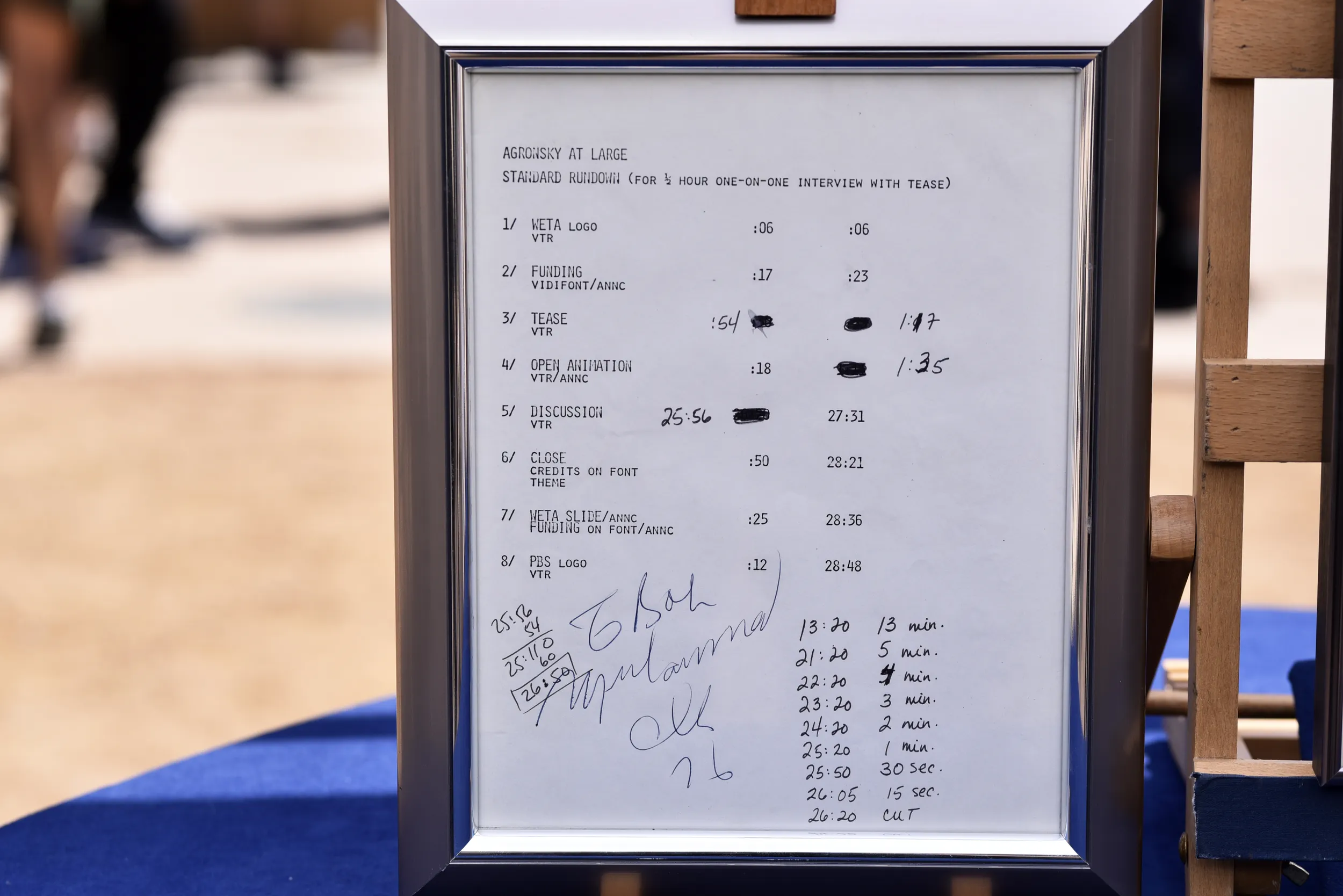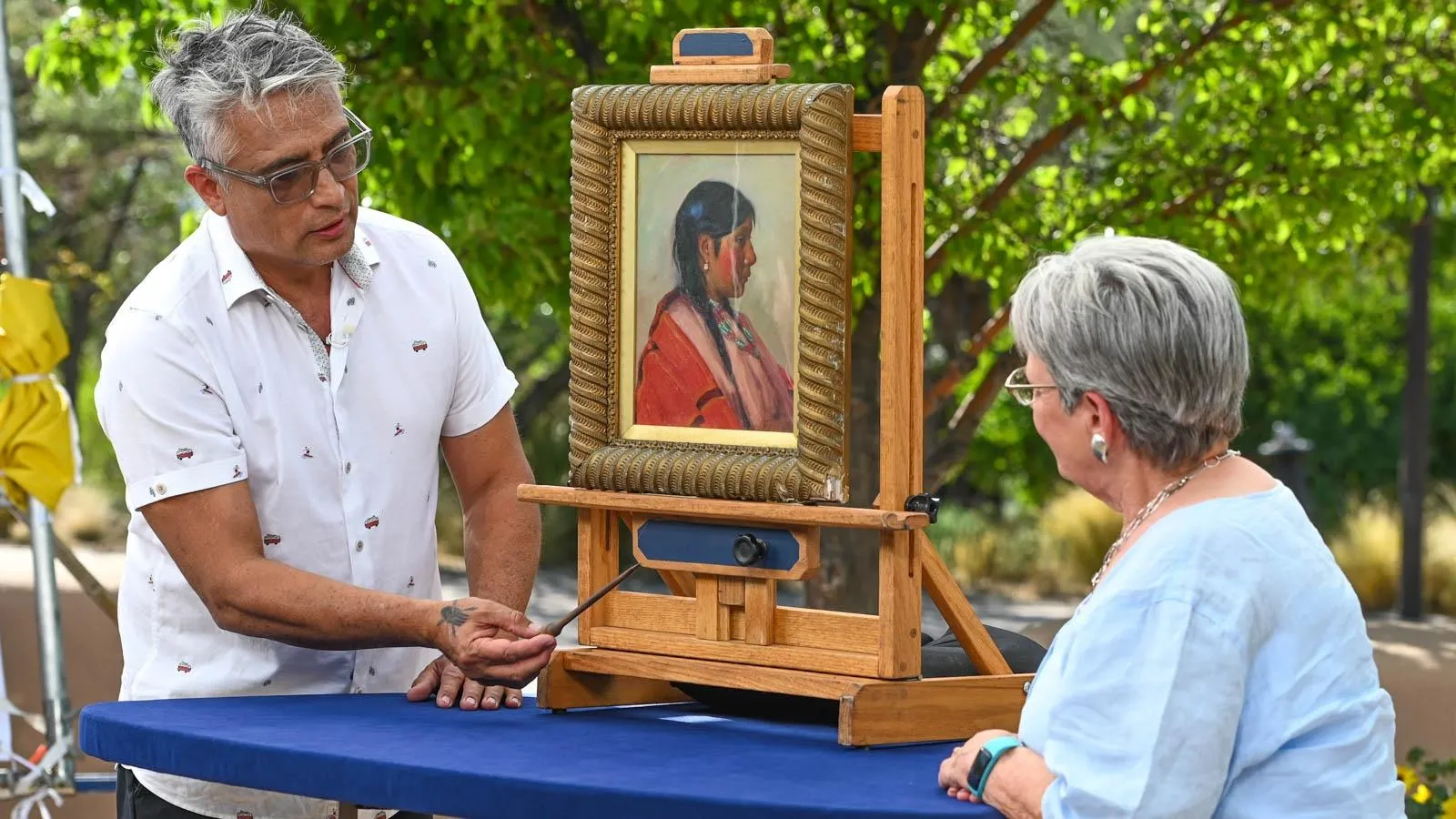1976 Ali Signature & 1977 Hitchcock-signed Caricature
APPRAISER: You have representations here of two giant figures of the 20th century. We have Muhammad Ali on the left and Alfred Hitchcock on the right. How did you get these?
GUEST: So it was a really early job for me. I was 23 years old, and I was working for a PBS program called Agronsky at Large. And Martin Agronsky was something of a titan, too, in the news business. In this program, he interviewed major figures. So world figures like Anwar Sadat, uh, Leonard Bernstein, and Muhammad Ali and Alfred Hitchcock. And as the production assistant, I didn't have a whole lot to do with it, except, I was in the truck and I was taking notes. Martin would do a full interview, a half an hour, with one of these famous people, but that interview would be preceded with a short introduction. And so the story of the introduction is the story of the Alfred Hitchcock. The director couldn't figure out how to do the introduction. And we were at a cocktail party, and my husband suggested, "Why don't you use the opening of "the TV show, in which you see a hand, "and the hand is drawing this caricature, and the camera pulls out to show you Alfred Hitchcock?" So the director said, "What a great idea." And so we were at Universal Studios, and we were on the set of the Psycho house, and Hitchcock was sitting in a director's chair that said "Mr. Hitchcock," and Agronsky was sitting in a director's chair that said "Mr. Agronsky." And the camera starts on the hand, and the hand is drawing. And Martin was a one-take guy. He didn't make mistakes. So the first take was fine. You always do a safety, right? Second take was fine. And the director said, "Line it up, do it again." And I'm thinking, why? And then he said, "Line it up, do it again, and again." We did five takes. And there were five of us who traveled. And when it was over, the director handed all of us the hand-drawn, hand-signed Alfred Hitchcock caricature.
APPRAISER: So he, he pulled a fast one on Hitchcock, and he got him to keep repeating the take and made him think that they needed more takes. And so your job was kind of keeping the time codes.
GUEST: Right.
APPRAISER: And that's where this sheet comes in
GUEST: Exactly. So this is a show rundown. And it shows you the individual times. My husband, then my boyfriend, said, "Please don't come home without an autograph from Muhammad Ali." And I didn't really have anything to give him to sign. And so I gave him the rundown. And he wrote, "To Bob, Muhammad Ali, '76."
APPRAISER: (murmurs)
GUEST: This one was November of '76. This one was May of '77.
APPRAISER: So when, when did the Agronsky show run?
GUEST: I don't remember the exact dates, but it was only 26 weeks, and I think it was once a week, and it was in '76 and '77.
APPRAISER: So we're keeping it in the PBS family today.
GUEST(chuckling): Keeping it in the PBS family.
APPRAISER: You're-- welcome back to the PBS family. One of the things that we talk about when we talk about autographs, there, there are hierarchies...
GUEST: Of course.
APPRAISER: ...and the values change based upon what has autographed. Hitchcock is known for this caricature. So we, when you have an Alfred Hitchcock autograph, to have it with the caricature is obviously much better than just his name on a piece of paper.
GUEST: Sure, mm-hmm.
APPRAISER: But even once we get to that point, we also look at, how big is it?
GUEST: Right.
APPRAISER: Because he often would sign sheets for people and he would do his caricature, but it, it might be two by three inches, something in an autograph book. Then you get into something slightly larger, and we're in a different ballpark. If you were to guess which is more...
GUEST: I would guess this one.
APPRAISER: You would be right. There's a really big difference between these two. Really? Ali is a giant of the 20th century. However, he signed a lot. A lot, a lot, a lot. So at auction, the Muhammad Ali would sell for about $200 to $300. Because you have such a big Hitchcock-- it's on a nine-by-12-inch sheet... A similar one on a big sheet, but he only made the caricature very small in the center of it, sold for about $2,000 to $3,000.
GUEST: Huh.
APPRAISER: The most recent one that used the full sheet, like yours, and I've only ever seen one, sold for $11,000.
GUEST (chuckling): Wow.
APPRAISER: So if they were, if it were to go into an auction, they would probably put an estimate of about $6,000 to $8,000 in hopes of achieving a nice result like that again. But that is what a huge difference the size makes.
GUEST: Hm, it's kind of amazing.
APPRAISER: I actually wondered if the one that sold in 2019 was one of the other five.
GUEST: Wow.
APPRAISER: It would explain why it was so big and it's exactly like yours.

$6,200 - $8,300 Auction
Photos


Featured In

episode
Santa Fe’s Museum Hill, Hour 2
New ROADSHOW in New Mexico with a $250,000 appraisal and more at Santa Fe’s Museum Hill!
20th Century

appraisal

appraisal

appraisal
Understanding Our Appraisals
Placeholder






